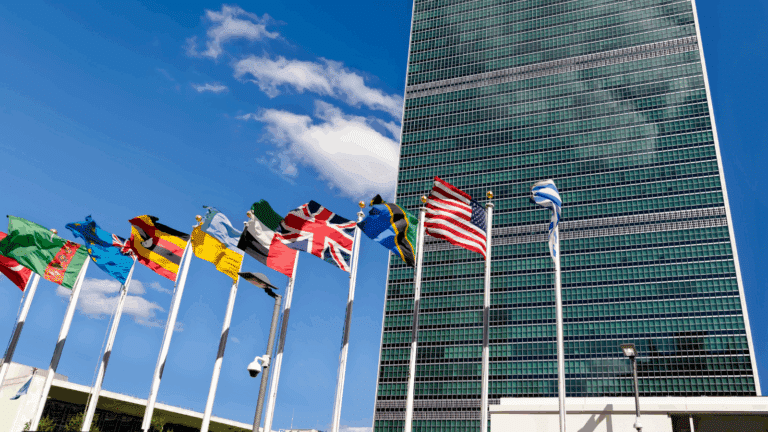This report represents the research and views of the author. It does not necessarily represent the views of the Center on Global Energy Policy. The piece may be subject to further revision. Contributions to SIPA for the benefit of CGEP are general use gifts, which gives the Center discretion in how it allocates these funds. More information is available at Our Partners. Rare cases of sponsored projects are clearly indicated. For a full list of financial supporters of the Center on Global Energy Policy at Columbia University SIPA, please visit our website at Our Partners. See below a list of members that are currently in CGEP’s Visionary Annual Circle.
-
CGEP’s Visionary Annual Circle
-
(This list is updated periodically)
Occidental Petroleum Corporation
EXECUTIVE SUMMARY
In recent months, Iran has responded to rising tensions with the United States—particularly the US launch of the “maximum pressure” campaign against Iran—by attacking oil tankers and infrastructure in the Persian Gulf region around the Strait of Hormuz (the Strait). These actions have been designed to signal to the United States, the Gulf states, and the international community that the American strategy of strangling Iran economically will not be cost-free, and to Saudi Arabia in particular that it is highly vulnerable to Iranian retaliation.
As the Strait of Hormuz is one of the world’s most critical energy chokepoints, the implications of Iran’s efforts merit close scrutiny and analysis. This study was designed to examine three scenarios for military conflict between Iran and the United States and assess the potential impacts on global oil prices—as one specific representation of the immediate economic impact of conflict—as well as broader strategic implications. The three scenarios are:
- Increasing US-Iran tensions that ultimately lead to a new “Tanker War” scenario similar to the conflict of the 1980s, in which Iran attacks potentially hundreds of ships in the Persian Gulf and Gulf of Oman over a prolonged period while also launching missiles at Gulf oil infrastructure.
- An escalation of tensions between Iran and the United States in which Iran significantly increases the scope and severity of missile attacks directed at major oil and energy infrastructure in Saudi Arabia and the UAE.
- A major conflict between Iran and the United States that includes damage to Gulf oil infrastructure and a temporary closure of the Strait of Hormuz.
Its main conclusions are:
- The risk of a major military confrontation between the United States and Iran has increased in recent months but still remains relatively low, as neither the United States nor Iran wants war.
- That said, the September 14, 2019, attack on the Abqaiq and Khurais facilities was a strategic game changer and shows that the biggest risk is a prolonged, low-intensity military conflict. The fact that Iran was willing to conduct such an attack was a surprise to most analysts and to the US government and its Gulf partners. The level of accuracy it showed in the strike demonstrated a technical proficiency the US government and outside analysts did not believe Iran had.
- In the more moderate and likely conflict scenarios, increasing tensions between the United States and Iran are unlikely to dramatically affect global oil prices.
- The most profound costs in the more likely scenarios are not energy-related but security-related. Even in the less escalatory scenarios, the United States would be forced into long-term deployments of a large number of air and naval assets that would need to remain in the Middle East for years at a cost of billions of dollars. Such deployments would take away resources that would otherwise be dedicated to managing great power competition with China and Russia. In the more extreme conflict scenarios, major loss of life and an even bigger and longer-term American military deployment would be expected.
- In the lower likelihood scenario of a major military confrontation between the United States and Iran, global oil prices would be dramatically affected, though price impacts would not be prolonged.
- All assumptions about the potential impacts on oil prices are based on the supposition that the United States protects global shipping lanes, but that theory deserves further scrutiny. For more than a generation, the United States has viewed securing global shipping lanes that are critical for commerce and energy as a core vital interest. But given the isolationist tendencies in the United States and President Donald Trump’s attitude that America should stop underwriting the defense of its allies, it is conceivable he may choose not to respond in the types of scenarios described in this paper or demand that countries most dependent on oil trade from the Gulf—most notably China—step up instead.
- Another wild card for oil prices in a major crisis scenario would be President Trump’s unpredictable policies regarding the Strategic Petroleum Reserve. Typically, an administration would be expected to coordinate an international response with the International Energy Agency (IEA) to release the SPR of a number of countries, but this cannot be assumed in the current administration.
Though these conclusions are to some extent comforting, the authors acknowledge that a key issue with any analysis of this situation is the unpredictability of the United States. In the present moment, neither US adversaries nor partners know quite what to expect—and, for that matter, neither does the US government or its observers.




